Written by V. Sokolenko, Candidate of Technical Sciences, S. Kotov, Candidate of Military Sciences; Originally appeared at Foreign Military Review 2020 #1, translated by AlexD exclusively for SouthFront
The tank fleet of the People’s Liberation Army of China (PLA) has a number of features compared to similar fleets in other countries.
Primarily, this refers to the number of combat vehicles. According to this indicator, the Chinese Ground Forces (GF) occupy the first place in the world. In addition, it has a large number of different purposes, technical equipment and years of production of light, medium and main battle tanks (MBT). At the same time, the troops simultaneously operate a large number of obsolete tanks of the first-, second- and third-generation.
Currently, the basis of the PLA tank fleet consists of medium and main battle tanks of different generations (6,840 units). It also includes a small number of light tanks (650), the modernisation potential of which (more than 60%) is completely exhausted.
The development and production of armoured weapons and equipment in China is carried out by the state enterprise “Norinko”, which is the base for research and development (R&D), production and maintenance of tanks. Despite the numerous financial difficulties of the second decade of the XXI century, new medium and MBTs, armoured infantry fighting vehicles (AIFV) of the new generation were put into mass production at the plant, which in their technical characteristics were noticeably closer to the best foreign models. In recent years, work on the creation of a new (fourth) generation MBT has again intensified.
However, the maintenance of a large number of tanks in the GF led to prohibitively high costs for their production, operation, repair and modernisation, which became a problem for the Chinese army. In this situation, the military and political leadership of the country decided to implement a new concept for reforming the tank fleet, the essence of which is as follows:
- reducing the total number of machines;
- a gradual planned reduction in the number of tanks of the first- and second-generation, which, according to western experts, may lead to their complete removal from service in 12-15 years;
- increase in the number of third-generation vehicles in the army, deployment of large-scale mass production of medium and main battle tanks of the third-generation;
- the use of extensive export supplies of tanks to obtain funds for their further reform.
The implementation of this concept in the PLA in the period from 2007 to 2018 led to the following changes in the quantitative composition of the tank fleet: the number of first-generation vehicles in the army decreased by 2,750 units (55%); the second, decreased by 800 (61%); the third, increased by 2,210 (1.72 times), but it should be noted that the total number of tanks in the park over the past ten years has decreased slightly, by only 740 units, or 9.8%.
Foreign sources note that the further implementation of the concept of transforming the PLA tank fleet will largely depend on the military-political situation in the world. Currently, the pace of reforms is beginning to slow down, as the centre of gravity of funding for the Chinese Armed Forces has shifted from the development of the land forces to more knowledge-intensive and expensive types of armed forces, such as the Air Force, Navy and Strategic Missile Forces.
First-generation tanks. These include: ZTZ-59 (Type 59) medium tanks – 1600 units; ZTZ-59 (Type 59-2) – 650 units; ZTZ-59D (Type 59R or Type 59D) – 600 units. These combat vehicles, developed on the basis of the Soviet T54 and T-55 tanks, were in mass production between 1958 and 1978.
Throughout 1984-2008 the majority of the tanks of the first-generation were ungraded. In the process, combat vehicles received new, more powerful weapons, enhanced armour and special protection, more powerful and reliable power plants and transmissions. The crew of the first-generation tanks was four people.
The combat weight of the upgraded vehicles was in the range of 35-36 tons. The ZTZ-59 tank has a 105 mm smoothbore gun, while other versions have a 105 mm rifled gun. The armour on all vehicles is homogeneous steel. Dynamic protection and fire control system using a computer were provided only on the ZTZ-59D tank.
The next stage of modernisation of first-generation tanks is planned for the period from 2018 to 2022.
In the course of work, they will be equipped with third-generation dynamic protection (DP), an improved weapons control system (WCS) and a diesel engine with a capacity of 840 HP.
The total number of first-generation tanks in the army is decreasing every year and currently stands at 2,850 units, or 41.7% of their total number.
The ZTZ-59D tank is the most advanced modified first-generation vehicle. Developed on the basis of the ZTZ-59 tank (Type 59). It was upgraded in 2006-2008. The main differences from the basic model: enhanced protection due to the installation of dynamic protection of the second-generation, improved fire control systems, improved mobility indicators. The crew is four people.
Combat weight with the installation of the DP has risen to 37 tons. Armament: 105 mm rifled gun, adopted in NATO countries. Ammunition is 45 rounds, and the latest generation of ammunition is used when firing: armour-piercing sub-caliber with detachable parts, cumulative and high-explosive fragmentation.
The new computerised WCS included a stabilised combined (day/night) sighting system for the gunner, combined with a laser rangefinder. On the roof of the tower there are weather sensors connected to the WCS. According to the developer, the preparation time for opening fire on a stationary target from the spot is 5 seconds. It increases to 7 seconds if only the target is moving, and to 10 seconds if both the tank and the target are moving at the same time.
All upgraded models are equipped with a new radio station, improved navigation system and equipment for protection against weapons of mass destruction (WMD).
The first batch of machines was fitted with a diesel engine capacity of 520 HP. Further on, it was replaced with the 730 HP engine.
Second-generation tanks. These are ZTZ-79 (Type 79) – 200 units; ZTZ-88A (Type 88A); ZTZ-88B (Type 88B) – only 300.
The tanks were in mass production from 1978 to 1988. A characteristic feature of the appearance of the ZTZ-88A(B) modification is the support rollers of a smaller diameter, compared to those installed on previous models created on the basis of Soviet technologies. The total number of second-generation combat vehicles in the army is currently 500 units, or 7.3% of their total number.
Second-generation tanks were produced in small batches, and today they are in service in tank units only in the Northern and Western military districts of China.
The ZTZ-88B tank (Type 88B) is the most advanced modification of the second-generation combat vehicles (developed on the basis of the ZTZ-88), which are regarded by Chinese experts as fully national projects. The crew is four people, the combat weight is 38 tons. The main differences from the basic model: an improved 105 mm rifled gun and a computer-controlled WCS were installed, anti-cumulative “lattice” screens were removed along the sides of the tower, and the location of smoke grenade launchers were changed. The armour is homogeneous steel. The ZTZ-88B tank differs from the ZTZ-88A modifications with enhanced armour protection and upgraded WCS.
Third-generation tanks. These include the main battle tanks ZTZ-98A (Type 98A) – 40 units; ZTZ-96 (Type 96) – 1000 units; ZTZ-96A (Type 96A) – 1500 units; ZTZ-99 (Type 99) – 600 units; ZTZ-99A (Type 99A) – 250 units and the medium tank ZTQ-15 (VT5) – about 100 units. The total number of third-generation vehicles in the army is 3,490 units, or 51% of the total tank fleet.
The most advanced tank of the third-generation is the ZTZ-99A tank, which is manufactured in relatively small quantities and is currently in the units of the so-called strategic reserve. It has the highest cost among Chinese third-generation tanks. The most numerous of them in the PLA was the ZTZ-96A.
The new medium (“light”, according to the Chinese classification) tank ZTQ-15 (VT5) was adopted by the PLA in December 2018, and so the troops have a small number of such vehicles. Its combat weight is about 35 tons. Production of the ZTQ-15s are delivered primarily to units stationed in southern China, where the mountainous terrain restricts the use of heavy combat vehicles such as the ZTZ-96 and ZTZ-99 tanks.
The ZTZ-98A tank is the first production of Chinese tanks of the third-generation. In the period from 1998 to 2005, it was produced in small batches.
In total, about 200 machines were manufactured. It was in service with the PLA’s 6th and 8th Panzer divisions, which are informally called “digitized”. The crew is three people, the combat weight is 48 tons. Length with the gun forward 10.9 m, width 2.8 m, height on the roof of the tower 2.4 m. Armament: 125 mm smoothbore gun. The combat vehicle has a modular turret armouring, a WCS, anti-ATGM and anti-WMD systems, an engine and transmission integrated into a single power unit. The maximum speed on the highway is 65 km/h. Power reserve of 500 km for fuel (650 km with additional fuel tanks). The machine is equipped with a WD 396 V-8 turbocharged diesel engine with a capacity of 1200 HP. It is assumed that this tank will completely replace the ZTZ-99A vehicles in the army.
ZTZ-96 tanks, as well as its modification ZTZ-96A, are the most mass-produced combat vehicles in the PLA. Among the third-generation tanks, their number reaches 72%. This machine is developed on the basis of the ZTZ-88B and ZTZ-90-IIM tanks. Serial production was from 1997 to 2000. Subsequently, it was repeatedly upgraded.
The combat vehicle has a modular armour, automatic loading, WCS with a Chinese-made thermal imaging sight, can fire ATGM through the barrel of a gun with a laser beam pointing at the target, a single power unit, and bulldozer equipment. The crew is three people. Armament: 125 mm smoothbore gun, combat weight 42 tons. The armour is composite (steel, composite materials).
The ZTZ-96A tank is a further development of the ZTZ-96 (Type 96) tank. The serial production was from 2000 to 2005.
It differs from the prototype by reinforced armour of the frontal part of the hull and tower, improved DP, new-generation thermal imaging sights, improved characteristics of fire extinguishing systems and protection against WMD. ATGM shooting is conducted through the barrel of the gun with its pointing at the target by a laser beam.
The last batches of production vehicles have a salient wedge-shaped armour at the front of the tower (modeled on the ZTZ-99 tank (Type 99). The crew is three people, the main armament is a 125 mm smoothbore gun, the combat weight is 42 tons. The armour is composite (steel, composite materials). Since 2017, specialists have started the next stage of modernisation of the tank, which will later have the designation ZTZ-96B. Chinese military engineers plan to improve the protection and the command control in the future, and increase the power of the ammunition used.
The ZTZ-99 tank is a further development of two models: the ZTZ-96A (type 96A) and the ZTZ-98A (Type 98A). It has the characteristic wedge-shaped armour at the front of the tower and an increased surface area. The crew is three people. The combat weight is 52 tons.
Armament: 125 mm smoothbore gun. Armour is composite and modular. The upper part of the frontal armour of the hull and turret is reinforced by installing dynamic protection. The tank is equipped with thermal imaging devices for the commander and gunner, it is equipped with a diesel engine with a capacity of 1,500 HP.
The ZTZ-99A tank is the most advanced Chinese third-generation MBT. Serial production began, presumably in 2017. The crew is three people, the combat weight is 52 tons, the armament is an improved 125 mm smoothbore gun. The tank is equipped with an upgraded electromechanical automatic loading gun, which provides a rate of fire of more than 8 rounds/min. This machine differs from the ZTZ-99 tank by a higher level of digitalisation and computerisation of equipment and communications, an upgraded WCS, built-in PD and a new generation of active protection complex, completely national development and production.
According to western military experts, the tank (VT5) is one of the most advanced Chinese medium tanks. It was originally developed to replace the ZTQ-62 light tank (Type 62), the lighter and smaller T-54, and the ZTS-63 and ZTS-63A floating tanks (Type 63 and 63A), which are still in service with the PLA Ground Forces and Marines. In the future, replacement plans extended to the first-generation medium tanks. This was largely facilitated by new contracts for the export of ZTQ-15 to countries in the Asia-Pacific region.
In appearance and dimensions, this combat vehicle is similar to the main battle tank ZTZ-99 (Type 99), but its weight is 20 tons less. The characteristic features of the new model are: modular armour, wedge-shaped frontal part of the tower, the presence of built-in DP and mounted armour. The latter is planned to be installed in cases where the enemy has a large number of anti-tank close combat weapons.
Depending on the composition of the applied set of mounted armour, the combat weight of the tank is 33-36 tons. The crew is three people. The length with the gun forward is 9.2 m, the width on the side screens is 3.3 m, the height on the roof of the tower is 2.5 m. The main armament is a 105 mm rifled gun. The computerised WCS enables the tank to fire day and night at stationary and moving targets to a distance up to 3000 m. The hull and turret are all-welded from homogeneous steel rolled armour.
The “lattice” protection is installed only on the sides of the hull and tower. The tank is equipped with a power unit designed as a single power module. The unit includes a 1000 HP engine, manual transmission, cooling system and fuel tank.
Fourth-generation tanks. Since the beginning of the 1990s, as part of Project 9289, China has been developing a new MBT that, in the aggregate of its combat properties, if it enters mass production, will become one of the most advanced tanks in the world. The project has been led by the national company Norinko since 1992. In 1999, the R&D programme was adjusted at the request of the military.
The new project, called Project 9958, included many elements of the original 9289, but differed from the latter in a number of layout and technical solutions. The developed MTB became known as the “CSU-152 Heavy Combat Vehicle”. The tank development programme has been suspended several times for various reasons, but it has now been decided to continue the work on it.
The tank body is fully welded, with composite protection (steel, composite materials, ceramics), and the armour is made of depleted uranium (the type of armour installed on some modifications of the American M1A1/M1A2 MBT). In addition to passive protection, dynamic and active protection will be installed on the combat vehicle. Some modifications of modern Chinese tanks, such as the ZTZ-99A (Type 99A), are already equipped with an active protection system. It is planned to install an improved version of this complex on the CSU-152 tank under development, which in the future can be integrated into the next generation of Chinese tanks.
It is assumed that the new machine will be armed with a 152 mm smoothbore gun with automatic loading. Some foreign sources report that as an alternative to this gun, variants of 125 mm conventional and electro-thermo-chemical guns are being developed. The 152 mm gun will be integrated with an advanced day/night thermal imaging guidance system, which will provide the ability to fire at stationary and moving targets from a location and in motion with a high probability of hitting the target with the first shot.
It is expected that the maximum speed of the CSU-152 tank on the highway will be at least 70 km/h, and on rough terrain, about 45 km/h. To ensure high mobility of the tank, it is planned to install a diesel engine with a capacity of at least 1500 HP, an improved transmission and hydro-pneumatic suspension.
Thus, the PLA’s adoption of a new concept for reforming the tank fleet is aimed at reducing the number of obsolete first- and second-generation vehicles, while increasing the number of modern third-generation combat vehicles. Since the beginning of the reform, the number of third-generation tanks in the army has increased from 1,280 to 3,490 units and reached 51% of all available combat vehicles in 2018.



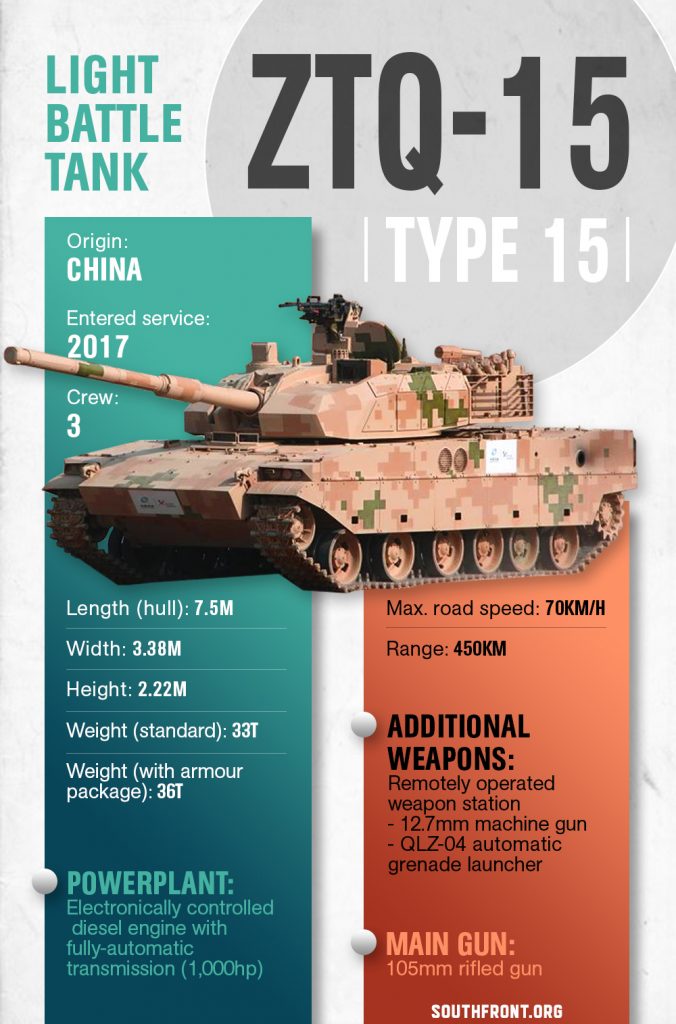
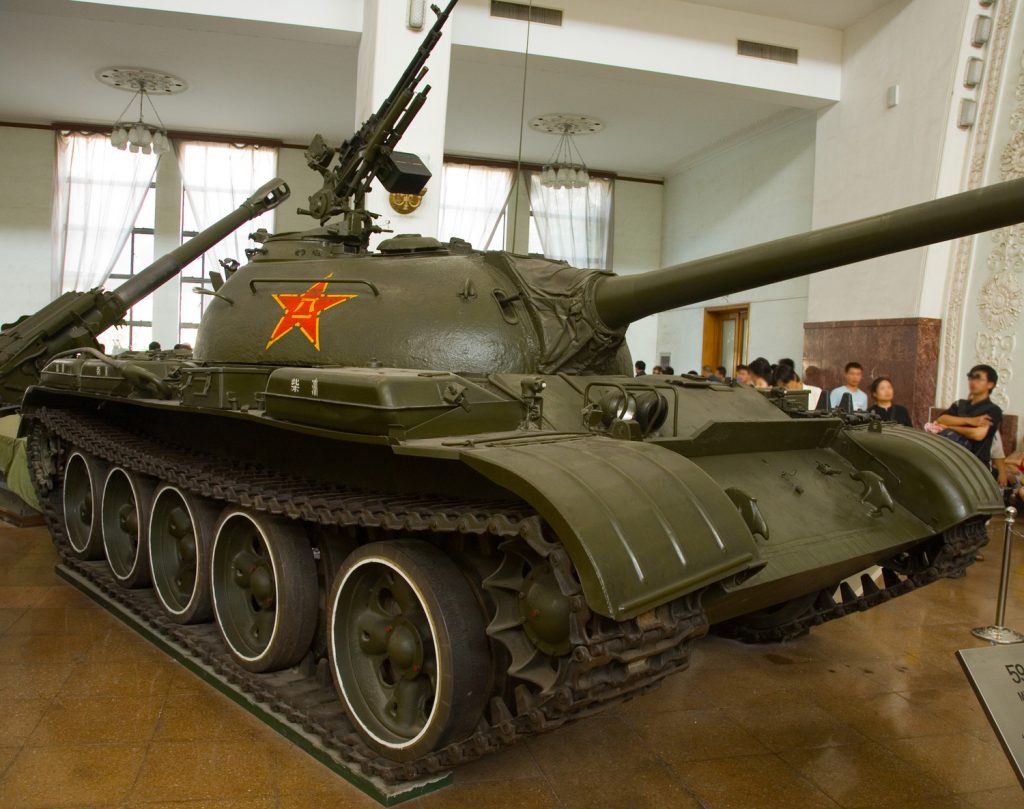
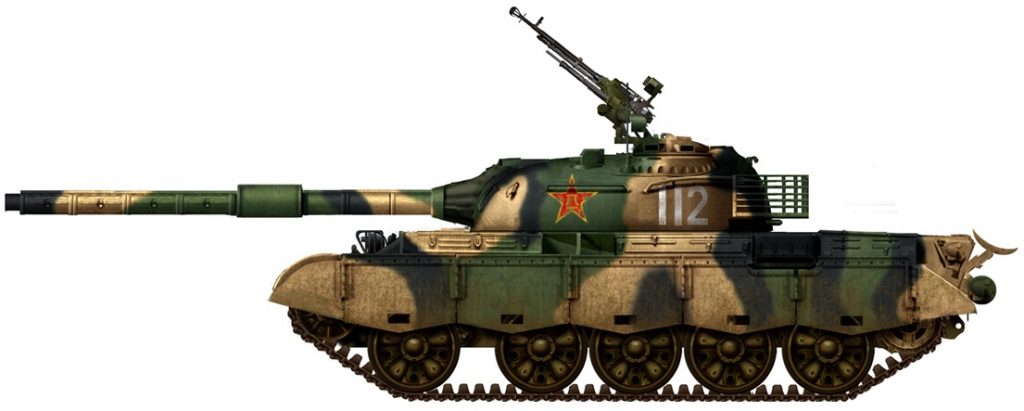

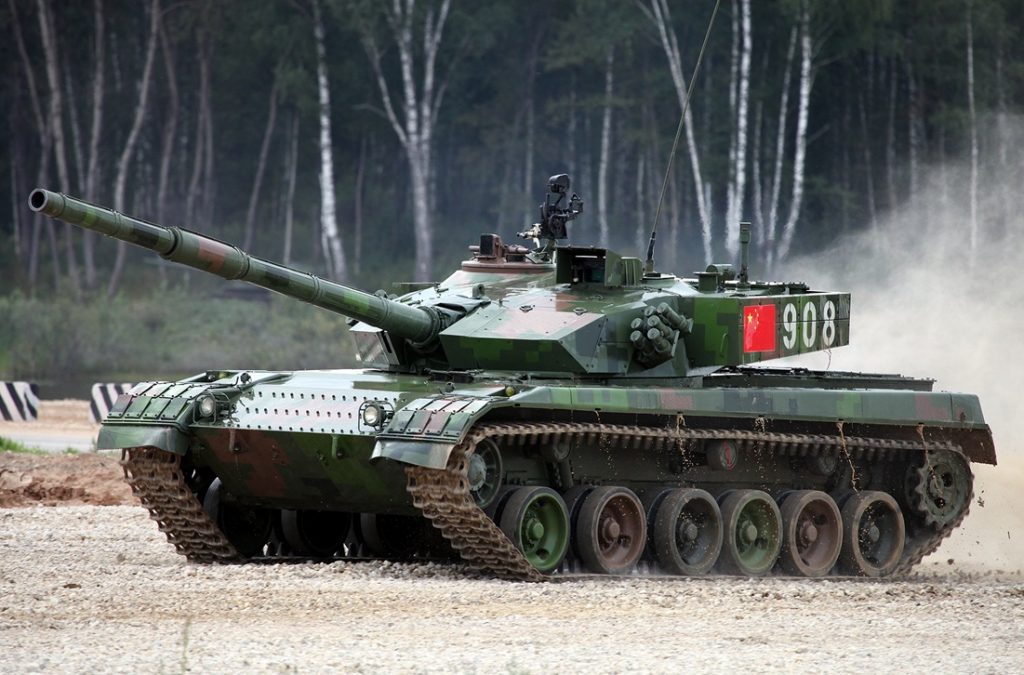

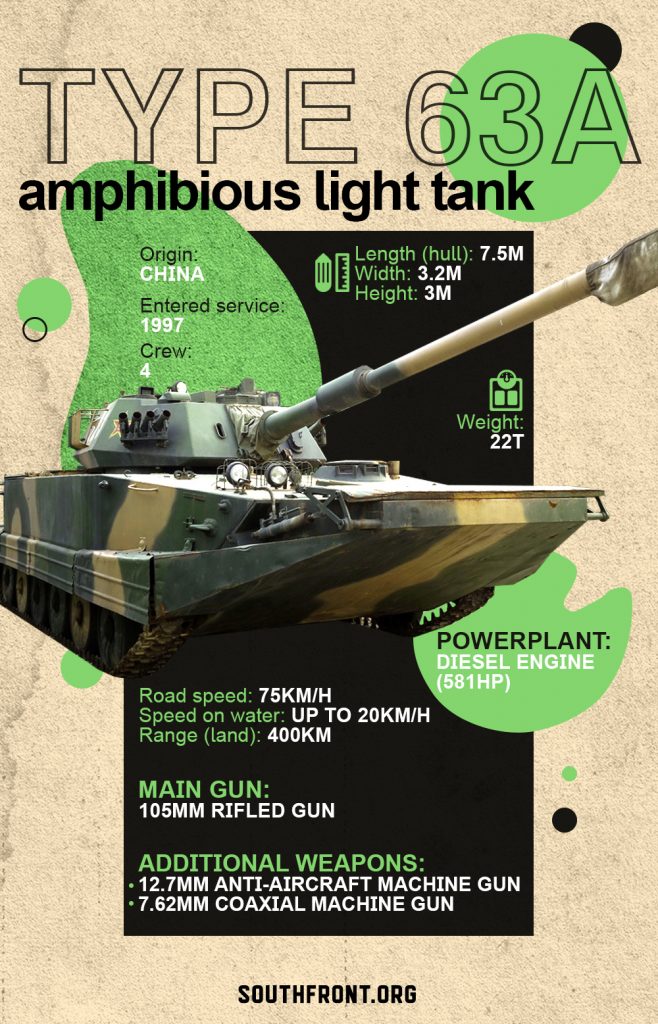




T-90 copy with extra composite armor.
Not impressed.
They should have bought the T-90MS instead.
My condolences to the Chinese tanks :D
?
Actually not. Their VT serie – light tanks, T-90 – MBT.
China is rapidly developing its tank technologies. Their new models not simply copies of old russian tanks. They have all needed sights, electronic hardware and good level of armor. It’s the reason why their cost is growing up to the level of close counterparts. China conquered its own niche at market by cheap price. This period is almost over, because none shares sophisticated technologies for free, and quality made units will not have low cost. Same as their cars. New models cost on the level of korean cars or a bit lower. Time of chinese junk is over.